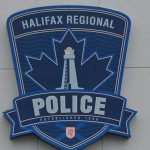With motorcycle season starting up, it’s the perfect time for riders to check that their helmets, protective clothing and bikes are in good shape and refresh their knowledge of safe driving practices.
“There were 49 serious injury collisions and three fatal collisions involving motorcycles in Nova Scotia RCMP territory in 2017,” says Cst. Chad Morrison of Nova Scotia RCMP Traffic Services. “Wearing a helmet and protective clothing, checking that your motorcycle is in good working order and driving safely can help protect you from those sorts of tragedies.”
Protect your body
Helmets can guard against serious injury and death so it’s important to know that you’re wearing a good quality model. Check that yours has a mark indicating it is approved or certified by one or more of the following agencies:
- British Standards Institute (BSI)
- United States of America Department of Transportation (DOT)
- Economic Commission for Europe (ECE)
- Snell Memorial Foundation (Snell)
It’s also a good idea to buy an extra helmet so you’re prepared if someone asks for a ride. Motorcycle riders who choose not to wear a helmet could be fined $237.50 for a first offence.
If a rider is thrown from a motorcycle, they hit the ground and often skid long distances. Protective clothing can help shield riders by acting as a barrier between their body and the road. Wearing riding boots, a reflective riding jacket and pants can help a rider keep their skin intact during a collision.
Inspect your bike
Motorcycle lights can blow and tires can wear out so it’s important to check your bike’s signal lights and tires regularly (especially at the start of the season). Damaged and worn-out parts should be replaced.
Drive safely
As is the case with any motor vehicle, operating your motorcycle safely can help protect you and other road users. Some tips to keep in mind are:
- Travel at a safe speed.
- Only ride when sober, focussed and well-rested.
- Check your blind spot before changing lanes.
- Ensure left-turning motorists have stopped before entering an intersection.
- Focus on where you need to go rather than looking at what you want to avoid (the motorcycle may go where you look).
- Ride within your experience and skill level.
- Go with an experienced rider the first time you explore a new area.
All motorists can help reduce motorcycle collisions. Those who share the road with motorcycles should keep their eyes on the road, check their blind spots and mirrors before changing lanes and give motorcycles space just like any other vehicle.
Police are already out patrolling by motorcycle this year to help protect Nova Scotia roadways. Last year, Nova Scotia RCMP members on motorcycle issued 480 tickets and they will continue to enforce safe driving throughout this motorcycle season.
.
Source: Media Release



